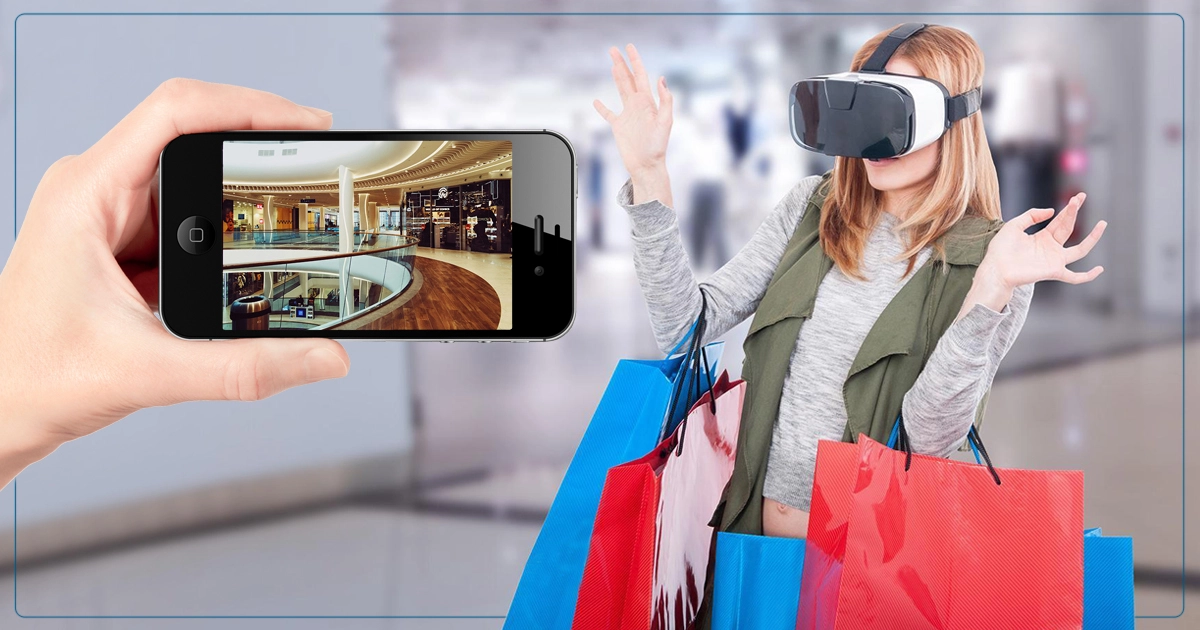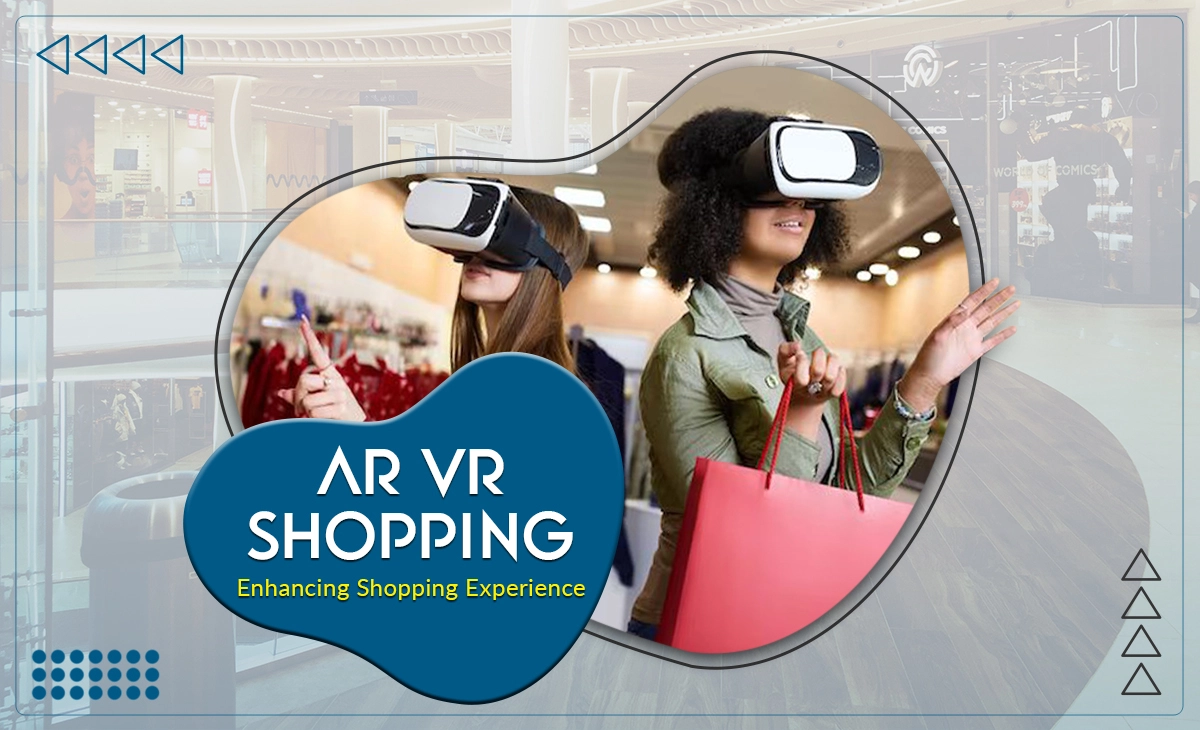Overview Of AR VR in Shopping
The use of AR VR in shopping makes many people curious because they do not know about this ongoing revolution. The advancement of technology connects everything in our daily lives including shopping. Digital technology gives us a scope of online shopping but we have to face many difficulties because we can not preview the product physically. To eradicate these difficulties AR and VR play a groundbreaking role in this sector. Slowly, retailers and consumers are adopting this new technology in their sector.
What is AR(augmented reality)?
AR means augmented reality that allows computer-generated visuals into the user’s view of the real world. It overlays information such as images videos or 3d models in reality. It enhances the real-life environment by adding virtual elements. We can experience this through smartphones, tablets, smart glasses, or dedicated AR headsets. The technology has applications in various fields including gaming, education, healthcare, navigation, retail, and more.
What is VR (Virtual Reality)?
Virtual Reality (VR) is a technology that creates a simulated environment that users can interact with as if they were physically present in that environment. A special language called VRML is needed to create a visual scenario to interact. A dedicated headset is required to create virtual reality. When you wear this headset then you will go into a new virtual world and feel like an avatar. By presenting users with a three-dimensional, computer-generated environment, VR can be used for various applications, including gaming, entertainment, training, education, simulation, and therapy. The advancement of this technology is happening rapidly and the use of VR is growing.
Exploring Online Shopping for AR VR
People are used to changing their traditional systems into digital systems with the blessing of new technology. Traditionally in terms of shopping, we go shopping to buy something physically. But now we prefer online shopping to traditional shopping. It reduces our time but creates new difficulties such as getting the wrong delivery and having to return. It wastes our money.
AR and VR create new possibilities to overcome this problem. If we have digital devices as smartphones or any other then we can take advantage of AR. By using this technology users can view 3D models of products from every angle in any space. AR technology makes it more engaging to people than offline shopping. As an example, Amazon is an e-commerce site. When you want to buy a product from here, you can visualize your products and how they will look after placing them in your home. This is how you can make happy shopping with confidence without wasting your money and time.

AR VR in Shopping
On the contrary, VR Gives you more realistic features. When you wear a headset, it takes you to a new world. You can give a virtual tour of a showroom. It breaks the barrier between two places and gives enormous scope to explore every product in detail and understand which is suitable for you. You can go shopping without hesitation or anxiety. Major brands like BMW allow everyone to have virtual showroom tours. VR allows interactive shopping for everyone.
Like AR and VR there is also mixed reality called MR. It is used in different ways. In mixed reality, users engage with both virtual and physical objects, manipulating virtual items as if they were real. Devices like headsets or smart glasses facilitate this interaction, blurring the lines between reality and virtual reality. MR modeling in shopping offers exciting opportunities to enhance the retail experience by providing customers with immersive, interactive, and personalized shopping experiences both online and offline.
What is the difference between Virtual Reality and Augmented Reality?
Many people confuse between AR and VR and their features. These two technologies have many similarities and differences. Augmented Reality (AR) makes your real world better by adding computer-made pictures or text to what you see. It mixes digital elements like sounds, images, and words with what you see around you.
On the other hand virtual reality creates an illusion by taking you to a virtual world where you can act like an avatar. These virtual assets can be 2D or 3D images, sound, or video. The assets of AR are special apps, smartphones, Tab, computers, and the VR headset.
There are differences between 3D AR/VR modeling also. 3D modeling focuses on creating digital representations of objects or scenes, while AR overlays digital content onto the real world, and VR immerses users in entirely virtual environments. While they share some commonalities and can be used together, each technology serves distinct purposes and offers unique user experiences.
Benefits of using AR VR in shopping
These new technologies bring many benefits to consumers and retailers. In the past for retailer, they have to make understand consumers about product pros and cons. They have to manage the customers to buy products. Consumers have to face many problems such as getting the wrong delivery, money, and time waste.
Enhanced customer experience:
AR and VR technologies provide immersive experiences, allowing customers to visualize products more realistically. They can see how items look, fit, or function in their environment (AR) or within virtual stores (VR), leading to increased confidence and satisfaction with their purchases.
Virtual showroom:
Virtual showrooms enable consumers to buy products without leaving their homes. They can see their products in 3D by using VR.
Reduced return rates:
By using AR VR in shopping, customers can preview their products more accurately so that they do not face problems with products and it reduces the return rate.
Increased engagement rate:
When customers do online shopping, they are confused about buying products. Because they are not sure about the quality of products. But when you use AR and VR technology you can preview the products by taking them in hand or you can visualize your product in your room. This scope boosts confidence in buying products and increases engagement rate.
Conclusion
Overall, integrating AR VR into shopping experiences enhances customer engagement, satisfaction, and conversion rates while offering cost savings and opportunities for brand differentiation and innovation. As AR and VR technologies continue to evolve and become more accessible, we can expect to see even greater innovation in the retail sector. Retailers that embrace these technologies and incorporate them into their strategies will be well-positioned to thrive in the increasingly digital and competitive marketplace.
